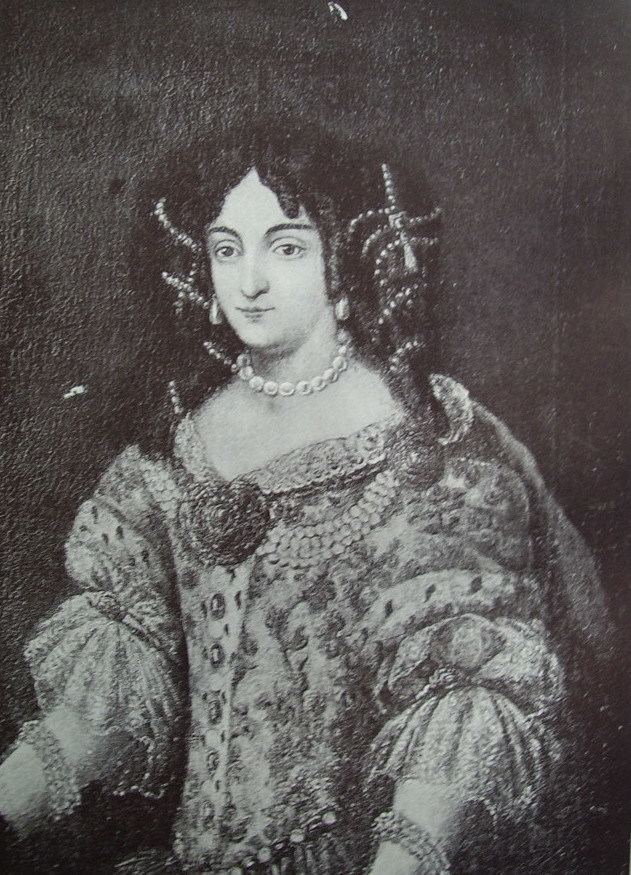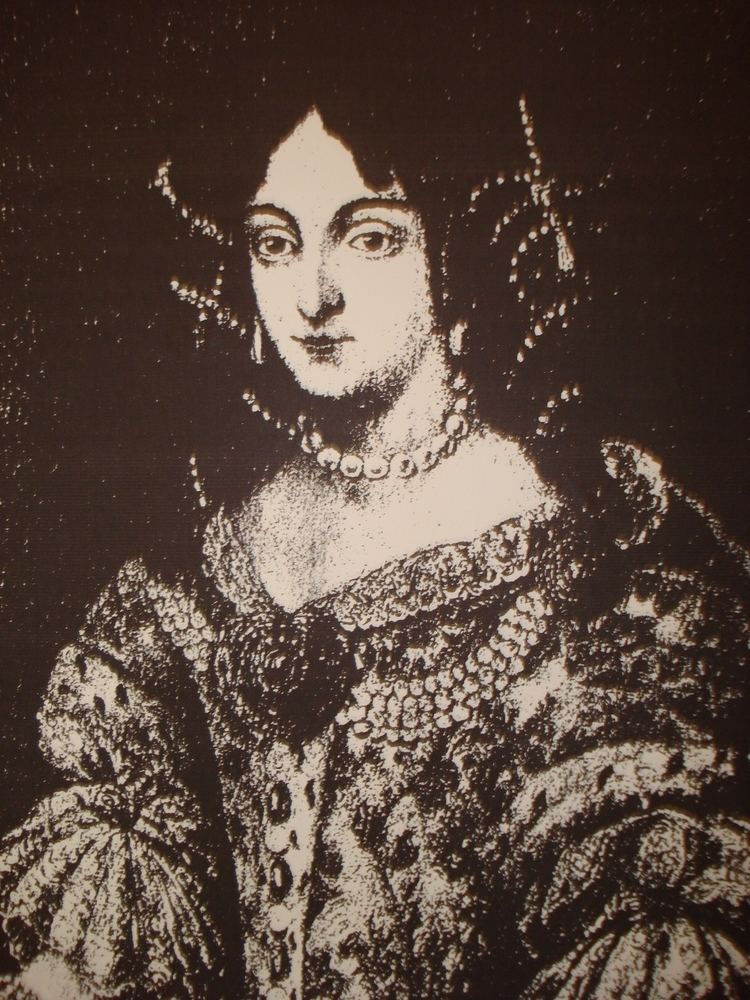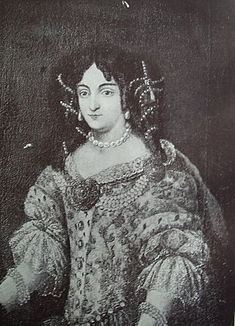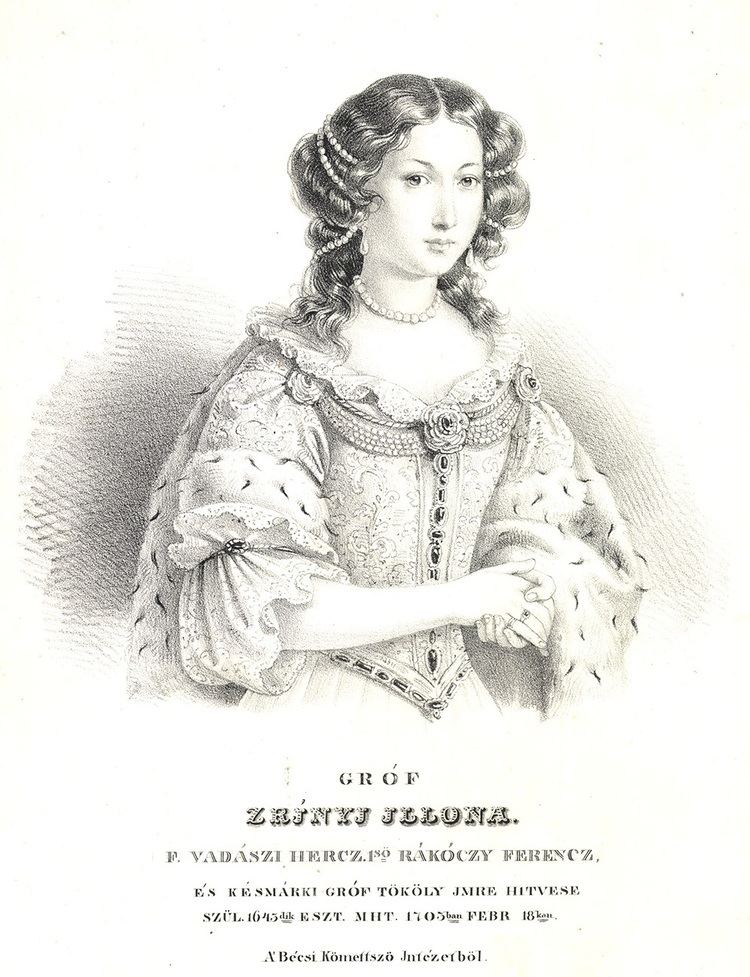House House of Zrinski | Name Ilona Zrinyi | |
 | ||
Burial St. Elisabeth Cathedral in Kosice,present-day Slovakia Spouse Francis I Rakoczi,Imre Thokoly Issue Gyorgy (Juraj),Julianna Borbala (Julijana Barbara),Ferenc (Franjo),Erzsebet (Elizabeta) Father Petar Zrinski, Ban (viceroy) of Croatia | ||
Defending the Fort: the Life and Times of Ilona Zrinyi
Countess Ilona Zrínyi (Croatian: Jelena Zrinska, Hungarian: Zrínyi Ilona) (*Ozalj, 1643; †Izmit, 18 February 1703) was one of the last surviving members of the Croatian Zrinski/Zrínyi noble family and one of the greatest heroines of Croatian and Hungarian history. She was the daughter of Petar Zrinski, Ban (viceroy) of Croatia, and the wife of Francis Rákóczi I and Imre Thököly, as well as the mother of Francis Rákóczi II.
Contents
- Defending the Fort the Life and Times of Ilona Zrinyi
- Life
- Early life and family
- Marriages
- Defense of Palanok Castle
- Internment exile and death
- Legacy
- Descendants
- References

Life

Ilona Zrínyi was a notable heroine and combatant in the struggle for national liberation of Croatia and Hungary in the 17th century from the absolutistic reign of the members of ruling Austrian Habsburg dynasty.
Early life and family

Ilona was born Jelena Zrinska in Ozalj, Croatia. She was the eldest child of Croatian Ban Petar Zrinski and his wife Katarina Zrinska née Frankopan, a Croatian poet. Later her parents had two daughters, Judita Petronila (*1652 – †1699) and Aurora Veronika (*1658 – †1735), as well as a son Ivan Antun (*1651 – †1703). Ilona and her siblings were the last generation of descendants of the once-powerful Zrinski family.

From her childhood she was known for her beauty and good education. There is little information on her schooling; it is known though that she acquired a high level of knowledge within her family, not only from her father and mother, Croatian writers and erudite persons, but from her uncle Nikola Zrinski as well.
Marriages

On 1 March 1666 she married Francis Rákóczi, with whom she had three children: György, born in 1667, who died in infancy; Julianna, born in 1672; and Ferenc (commonly known as Francis Rákóczi II), born in 1676. On June 8, 1676, not long after Francis II's birth, the elder Francis died. The widowed Ilona requested guardianship of her children and was granted it, against the advice of Emperor Leopold I's advisers and against Francis I's will. In this way she also retained control over the vast Rákóczi estates, which included among them the castles of Regéc, Sárospatak, Makovica, and Munkács. In 1682 she married Imre Thököly and became an active partner in her second husband's Kuruc uprising against the Habsburgs.
Defense of Palanok Castle
After their defeat at the 1683 Battle of Vienna, both the Ottoman forces and Thököly's allied kuruc fighters had no choice but to retreat, and Thököly quickly lost one Rákóczi castle after another. At the end of 1685 the Imperial army surrounded the last remaining stronghold, Palanok Castle in Munkács. Ilona Zrínyi alone defended the castle for three years (1685–1688) against the forces of General Antonio Caraffa.
Internment, exile and death
After the recapture of Buda, the situation became untenable, and on 17 January 1688 Ilona had no choice but to surrender the castle, with the understanding that the defenders would receive amnesty from the Emperor, and that the Rákóczi estates would remain in her children's name. Under this agreement, she and her children traveled immediately to Vienna, where in violation of the pact the children were taken from her. Ilona lived until 1691 in the convent of the Ursulines, where her daughter Julianna was also raised. Her son Francis was immediately taken to the Jesuit school in Neuhaus.

At the time, her husband, Thököly, was still fighting with his Kuruc rebels against the Habsburg army in Upper Hungary. When Habsburg General Heisler was captured by Thököly, a prisoner exchange was arranged, and Ilona joined her husband in Transylvania. In 1699, however, after the Treaty of Karlowitz was signed, both spouses, having found themselves on the losing side, had to go into exile in the Ottoman Empire. The countess lived in Galata, district of Constantinople, and later in Izmit, where she died on 18 February 1703. She was buried in the French church of Saint Benoit in Galata.
Legacy
Ilona Zrínyi is celebrated in Croatia and Hungary as one of the greatest national heroines, patriots and fighters for freedom, who opposed, although unsuccessfully, the autocracy and absolutism aspirations of the Habsburgs. Her even more famous son Francis II Rákóczi continued the struggle for the independence of Hungary (1703–1711).
In October 1906 the remains of the Croatian countess were reinterred with her son's in the St. Elisabeth Cathedral in Kassa (today Košice).
Descendants
From her first marriage with Francis Rákóczi, Ilona had three children:
From her second marriage with Imre Thököly, Ilona had three children, all of whom died at a young age (including one she was pregnant with during the siege of Munkács).
